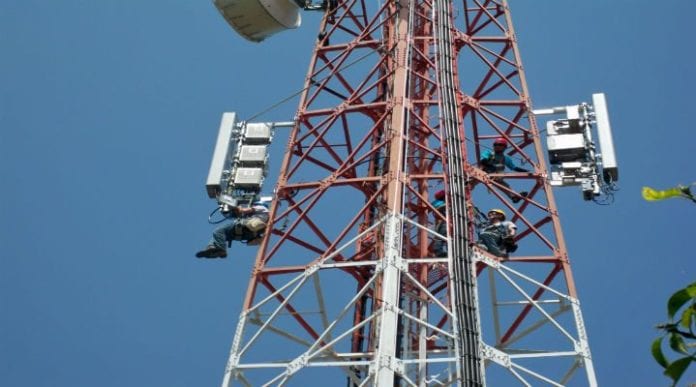Many of the sensors used in IoT are battery-powered and organized into mesh networks. Set to transmit anywhere from every few seconds to every few hours. They can run for years before needing a battery replacement, but eventually they do. And if there are thousands of them, keeping track of battery status and installing replacement batteries can become a burden. Failing to replace batteries can affect — even cripple — a whole system.
This would appear to be an ideal place for energy harvesting — extracting small amounts of energy directly from the environment — and indeed that is happening. Let’s take a look at the energy sources finding use these days.
Photovoltaic
The first technology to come to mind may be solar, which is getting cheaper and cheaper, but sunlight is not always available. Does that mean that it can’t be used indoors?
In a word, no. IoT sensors generally require tiny amounts of power; a good example is EnOcean GmbH, which has a system that uses small solar cells that can deliver enough electricity under normal room lighting conditions (200 lux) to power a small field device like a sensor or actuator.
And of course, outdoors it’s a simple matter to add a rechargeable battery that can keep things running during the hours of darkness, or in bad weather.
Vibration
Another energy source that’s often used for harvesting is vibration. If the sensor or actuator is mounted to a piece of machinery that vibrates (and most machinery vibrates), then either a piezoelectric or electromagnetic device can extract energy from it. A piezoelectric element uses a piece of ceramic or plastic film that creates a potential when stressed or deformed. Some people consider the high impedance of piezoelectric generators a drawback, as it can make the conversion to useful voltage problematic, but others have had success with it.
An electromagnetic element, often consisting of a permanent magnet, coil and reactive mass has lower impedance and often works better. Mikko Lampi cites an example of an experimental installation that produced 180 microwatts of power from vibration with an amplitude of 0.85 mm.
The British firm Perpetuum has a line of vibration-to-electric energy converters that use magnets and coils and are designed for use on railroads.
Another British firm, 8power Ltd, says that using parametric resonance technology from the University of Cambridge and its own MEMS (microelectromechanical systems), it can generate significantly more power from the same vibration levels than can competing methods. Suggested applications are in machine monitoring and digital transportation, like railroads. Cambridge University has also experimented with using the devices to power wireless sensors on a highway bridge using vibration from traffic.
One interesting variation on motion harvesting comes from EnOcean, which uses an electromagnetic generator that converts the motion of pressing a button to enough energy to send a brief signal.
Energiot, which appears to be a very small startup, says that it is working on something called Energiot vibe that uses piezoelectrics to convert ambient vibration to electricity, but we were unable to gather much information on it.
Thermoelectric
Thermoelectric energy harvesting uses the Peltier effect to extract energy from temperature difference. Sometimes the temperature differences can be large, as in industrial processes; Emerson uses Perpetua’s Power Puck thermoelectric energy harvesting devices to power wireless process transmitters; the heat of the steam or other process fluid warms the pipe and powers the device.
Sometimes the temperature differences are small. EnOcean uses a Peltier element to generate small amounts of power from temperature differences; enough is generated from just a few degree difference to power a sensor or small actuator.
Power from the ambient RF environment
Back in the late 1950s “stolen power” receivers were popular with hobbyists. These were essentially two crystal radios in one package; one, tuned to the strongest available local radio station, produced enough power to run a one-transistor amplifier on the other that provided enough audio to run an earphone. In areas less than a mile from a broadcast station, some designs could generate speaker volume.
Drayson Technologies sells the Freevolt energy harvesting system, with extracts power from the local RF environment — both broadcast stations and nearby Wi-Fi routers. The company also has inductive power transfer equipment.
Power management
Just as important as the harvesting of the energy is its management. Some energy sources, like RF, temperature difference, and vibration, are relatively constant, if low in power, while others, like solar, are intermittent. When a field device wakes up, its energy demand spikes. All this makes good power-management electronics essential as well as either a battery of capacitor for energy storage. Semiconductor maker e-peas semiconductors sells low power consumption microcontrollers and energy harvesting PMICs (power management integrated circuits). The latter controllers are customized for systems running on photovoltaic, thermal, vibration and RF, but they don’t do the harvesting. For vibration energy, they have “an integrated energy management subsystem that extracts DC power from a piezo or micro turbine generator to simultaneously store energy in a rechargeable element and supply the system with two independent regulated voltages.”
Cypress Semiconductor also has a line of Energy Harvesting Power Management ICs (PMICs) for use with vibration, solar, and thermoelectric devices.
Summary
The technology has advanced to the point that it seems likely that a large fraction, if not a majority, of IoT devices will soon use harvested energy and eliminate the need for battery replacement. We’ll see what happens.

